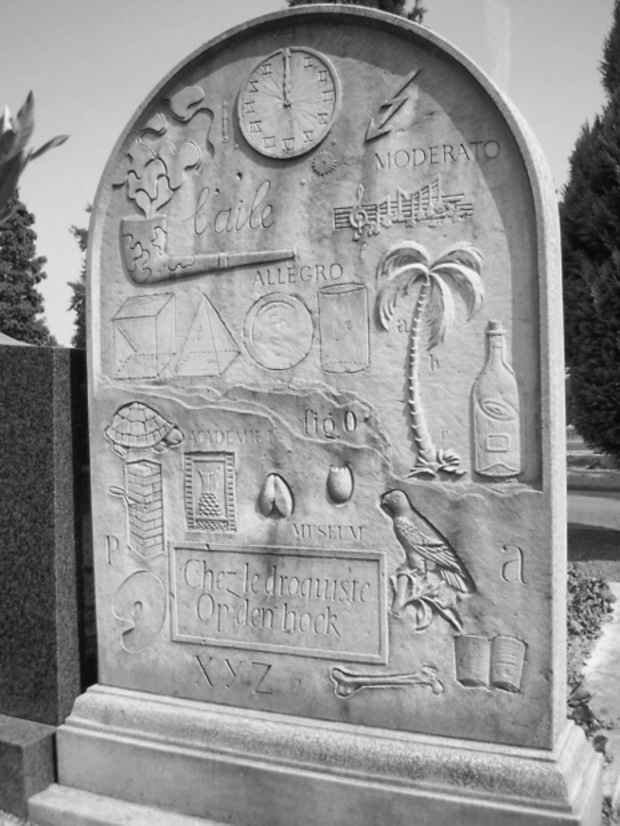“Cimetière d’Ixelles” Exhibition
Art in General

This event has ended.
When she came looking for B’s grave a few months after he died in the Hotel de Francia in Port Bou, A found nothing. Nothing, that is, other than one of the most beautiful places she had ever seen. “It was not to be found,” she wrote S shortly afterwards, “his name was not written anywhere.” Yet according to the records provided by the town hall of Port Bou, one of B’s traveling companions, Frau G had paid out seventy-five pesetas for the rental of a “niche” for five years on September 28, 1940, two days after B died from what was diagnosed by the local doctor as cerebral apoplexy, but is generally understood to have been suicide by a massive overdose of morphine tablets.
Yet name or no name, the place was overwhelming.
“The cemetery faces a small bay directly looking over the Mediterranean,” wrote A. “It is carved in stone in terraces; the coffins are also pushed into such stone walls. It is by far one of the most fantastic and most beautiful spots I have ever seen in my life.”
S was not impressed. Years later he seemed downright dismissive, bringing his book-length memoir of B to an end with these words: “Certainly the spot is beautiful, but the grave is apocryphal.” It was an abrupt and sour note on which to end the story of a life, as if the dead man and therefore we, too, had been cheated of an ending, and what we had gotten instead was a suspension, a book whose last page was missing.
Text: Taussig, Michael. Walter Benjamin’s Grave. Chicago: University of Chicago Press, 2006. Edited and altered by Lisa Oppenheim.
[Image: Marcel Broodthaers’s headstone, Ixelles Cemetery, Brussels. Photograph courtesy of Wikipedia]
Media
Schedule
from September 21, 2013 to October 19, 2013
Opening Reception on 2013-09-21 from 18:00 to 20:00